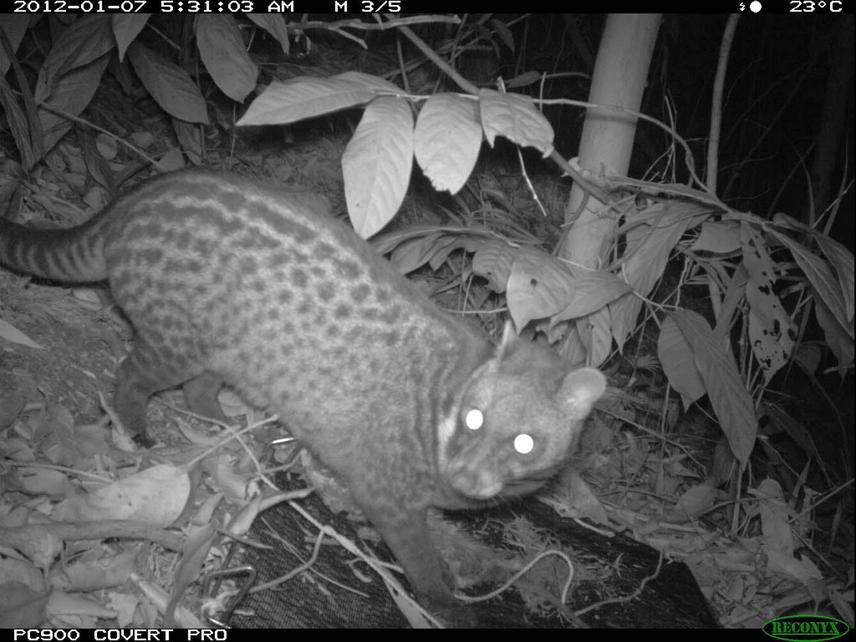Norman Lim
Studies on the effects of habitat degradation on wildlife generally focused on particular taxonomic groups and rarely consider ecologically functional groups as a whole. The project aims to investigate the impacts of land use changes on the vertebrate scavenger community and carcass removal, particularly the effects of logging, conversion to oil palm plantations, and forest rehabilitation.

A camera-trap image of Viverra tangalunga at MacRitchie Reservoir forest, Central Catchment Nature Reserve. Note the diagnostic narrow black bands on the tail.
Southeast Asia is a global biodiversity hotspot and possesses many of the world’s iconic endangered species. Within the region, Borneo has some of the highest levels of habitat exploitation and is representative of the biodiversity crisis that is sweeping Southeast Asia. However, studies on the effects of habitat degradation on wildlife generally focused on particular taxonomic groups and rarely consider ecologically functional groups as a whole. Scavenging is a widespread phenomenon in nature, with nearly all carnivorous vertebrates performing facultative scavenging. Scavengers influence nutrient recycling dynamics; because the rapid and localized release of nutrients into the soil can have detrimental effects, the presence of efficient scavengers often has direct implications on ecosystems. Although scavengers are an integral component in food webs and are involved important ecosystem processes, there has not been any attempt to investigate the functional role of scavengers. By making use of the unique experimental conditions at the Danum Valley Conservation Area and the INFAPRO site in Sabah, I aim to address the following research questions:
My research questions are:
- How does the scavenger community differ in various land use types?
- How do changes in community structure impact carcass removal by scavengers in various land use types?
- Do the scavenger community and rates of carcass removal benefit from forest rehabilitation?
For this project, I will use commercially available rodent, chicken, and pig carcasses because there are wild analogues at the study site. Enclosures will be used to restrict access of carcasses for subsets of the scavenger fauna—namely vertebrates and/or macroinvertebrates. I will deploy camera-traps to monitor the vertebrate scavenger identity and activity at the carcasses.